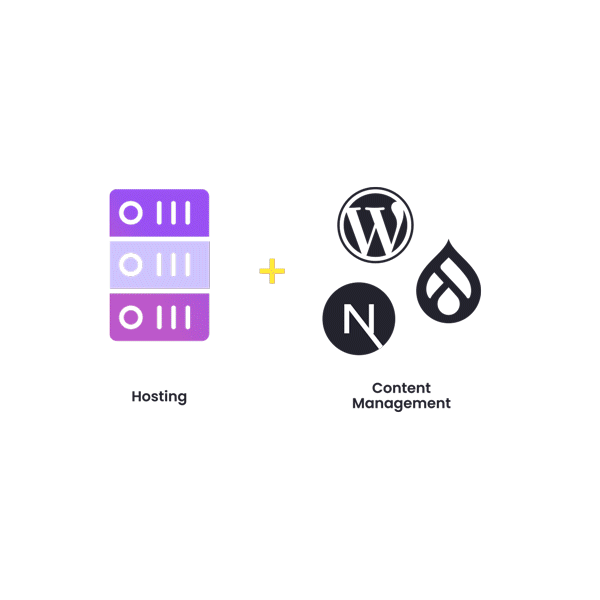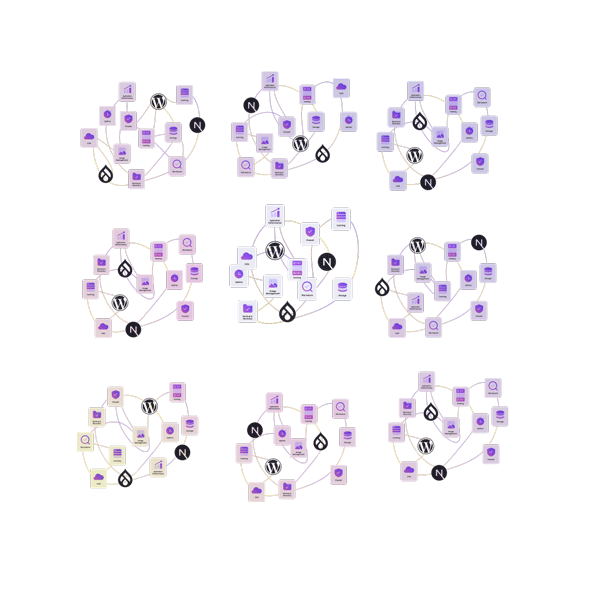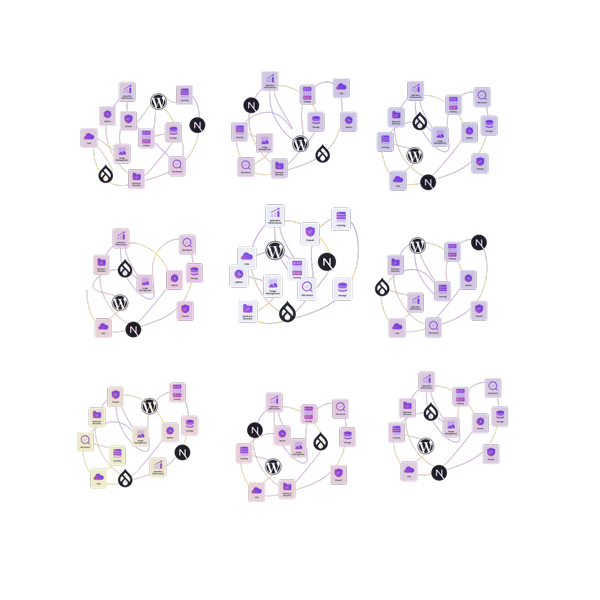Run exceptional web experiences on one platform
Image

Tens of thousands of web teams run on Pantheon
This assumption causes serious problems down the road…

You need Ops—24x7 security, performance, scaling, and optimization.
You need a Workflow—So your designers, developers, and marketers can iterate together.
You need Governance—To manage and secure your portfolio of sites and users.

You’ll end up with a tangled mess. Think chaotic sprawl, inconsistent UX, poor performance, uninspired websites… and a team that struggles.

Everything you need to create the best WordPress, Drupal, and Next.js experiences on the web.





Website operations, workflow and governance. All in one platform.
Deliver exceptional WordPress, Drupal, and Next.js experiences at scale, with agile teams, fast launches, and easy maintenance.
Why +700K Sites 🖤 Pantheon



Trusted brands trust Pantheon
Princeton University
"We run WordPress here with a small team and their expertise can only go so far. I sleep better at night knowing Pantheon is running WordPress. It allows my team to focus on the Princeton-specific functionality and services."
Jill Moraca
Senior Director, Web Development Services
Salesloft
"We’ve always got that trust and faith that the website will remain steady on Pantheon. I liken it to an IT department: When it’s working well, nobody praises it, but when it breaks, all hell breaks loose. And Pantheon just always works."
Ian Stanton
VP, Demand Generation and Digital
Golf.com
"In 2019 when Tiger Woods won the Masters and the site was on the old servers, there were three major outages. Our site traffic on Pantheon for this year's Masters was 30% higher. And we were as fast as we've ever been from a page load perspective."
Rob DeChiaro
Chief Operating Officer
Scalable solutions for every industry
Global brands from technology to higher education trust Pantheon to build and serve stable, secure, scalable digital experiences.
Consumer Brands
Deliver seamless brand experiences with up to 99.99% uptime and 10x faster content delivery. Easily manage and update product information across multiple sites in one platform.
Higher Education
Manage complex multi-website environments of up to 1000 sites across departments, editors, and developers from a single dashboard. Launch your higher education website up to 2x faster, and render pages 10x faster.
Government
Standardize sites for Section 508 compliance on demand and simplify security with one-click updates. Share data securely behind the firewall with Pantheon, while enjoying 24/7 support from WordPress and Drupal experts.
Technology
Accelerate development cycles and achieve seamless deployments. Benefit from a robust platform that guarantees up to 99.99% uptime, empowers collaborative workflows, and maximize security for technology-driven organizations.
Image

Image

What is Pantheon?
The Pantheon Platform simplifies the process of running websites in the cloud. Purpose-built for WordPress, Drupal and Next.js sites, it integrates all digital operations, workflows and governance into an easy-to-use interface with enterprise-grade security and 24x7 support. So you can deliver exceptional experiences that drive real business impact with every visit.
+10B
Pageviews
24/7
Support
3x
Faster Site Migrations
Learn more
The State of Iowa Modernizes its 70+ Websites, Improves Accessibility
Government services consolidate on Drupal with Pantheon and Lullabot to improve website quality, accessibility and readability.
Unofficial Official DrupalCon24 Party!
End DrupalCon week, the best way possible by hanging out with your closest Drupal friends!
Pantheon recognized as Managed Hosting leader in G2 Grid® Report
Discover where Pantheon's WebOps Platform ranks compared to other managing hosting providers in G2’s Managed Hosting Momentum Grid® Report.









